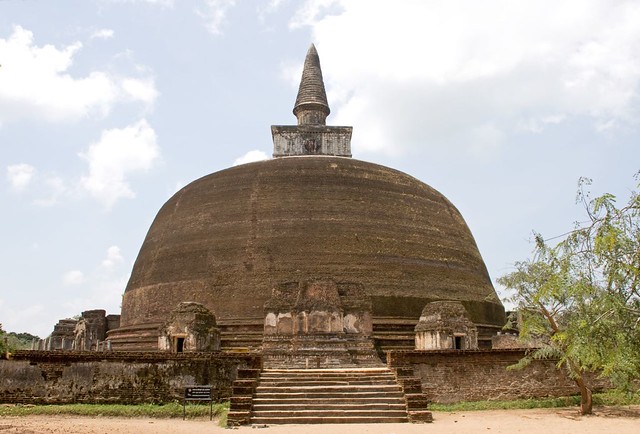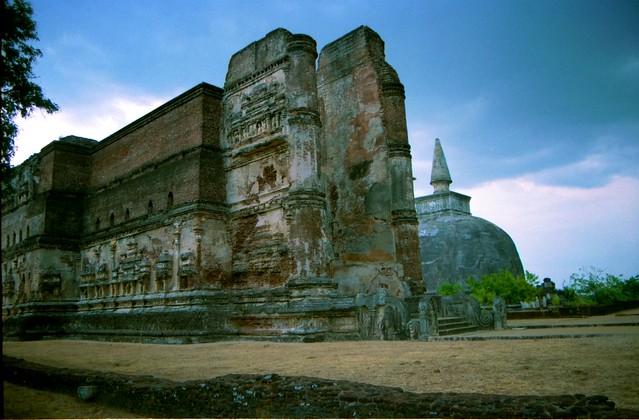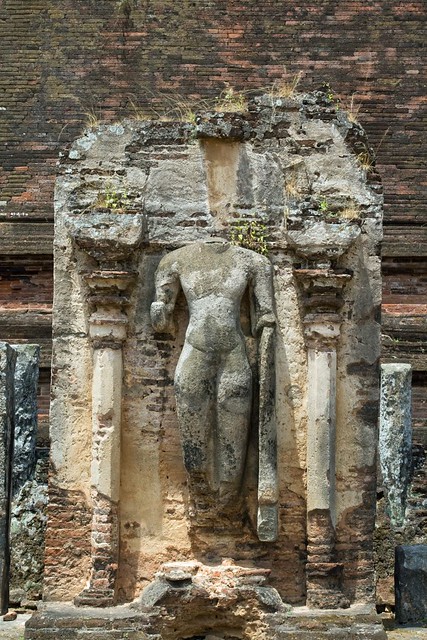Nilneth Sri Lanka
Monday, July 20, 2015
Tuesday, July 8, 2014
Wednesday, September 25, 2013
Tuesday, May 28, 2013
Sunday, March 31, 2013
Deegavapi (Digavapi) Stupa -Ampara
 Deegavapi is one of the 16 places which have been blessed by
the Buddha's presence. Buddha was invited to Kelaniya by Mani Akkika of Naga
Tribe, ruler of the Kelaniya region on his second visit to Nagadeepa. On the
8th year of attaining nirvana Buddha decided to visit Sri Lanka for the third
time specially to Kelaniya. During this visit he came to Deegavapi with 500
arhaths and spends time meditating.
Deegavapi is one of the 16 places which have been blessed by
the Buddha's presence. Buddha was invited to Kelaniya by Mani Akkika of Naga
Tribe, ruler of the Kelaniya region on his second visit to Nagadeepa. On the
8th year of attaining nirvana Buddha decided to visit Sri Lanka for the third
time specially to Kelaniya. During this visit he came to Deegavapi with 500
arhaths and spends time meditating.
...... "Moreover, he founded the Dighavapi-vihara
together with the cetiya; for this cetiya he had a covering of network made set
with gems, and in every mesh thereof was hung a splendid flower of gold, large
as a wagon-wheel, that he had commanded them to fashion. (In honour) of the
eighty-four thousand sections of the dhamma the ruler commanded also
eighty-four thousand offerings. When the king had thus accomplished many works
of merit he was reborn, after his death, among the Tusita gods.”...........
With passage of time, this temple was neglected with the
internal conflicts of the country. King Keerthi Sri Rajasinghe ( 1747 - 1781)
seeing the status of the temple carried out major renovations and handed it
over to Rev. Bandigide Negrodha thero along with 1000 'amunu' (2000-2500 acres)
of land in 1756. Two stone inscriptions by King Saddhasissa and King Keerthi
Sri Rajasinghe have been in existence at the Deegavapi until last century but
both of these have mysteriously disappeared now. But a copy of the Rajasinghe
inscription which was made in 1845 exists today.
 The Deegavapi Stupa lies about 18 kilometres east from
Ampara town in an area dominated by Muslims. Today the land belonging to the
temple premises including historical artifacts are under threat from Muslims
and Muslim politicians who attempt to wipe out any signs Buddhists heritage in these
areas. In the the recent past many conflicts has risen with the muslim
politicians trying to destroy the temple artifacts which are spread over
thousands of acres. While instances they have been saved most of the time they
have been successful with the government turning a blind eye. Recently a
parivara chethiya was bulldozed in constructing a road within the Deegavapi
land. The LTTE terrorist activities since 1980 also helped this cause since
access to this site by the general public was restricted. In the 80's the LTTE
attacked a Singhalese village murdering 13 and injuring over 40. Until the LTTE
was destroyed in 2008, Deegavapi was again left to few brave priests who risked
their lives to maintain a Buddhist presence.
The Deegavapi Stupa lies about 18 kilometres east from
Ampara town in an area dominated by Muslims. Today the land belonging to the
temple premises including historical artifacts are under threat from Muslims
and Muslim politicians who attempt to wipe out any signs Buddhists heritage in these
areas. In the the recent past many conflicts has risen with the muslim
politicians trying to destroy the temple artifacts which are spread over
thousands of acres. While instances they have been saved most of the time they
have been successful with the government turning a blind eye. Recently a
parivara chethiya was bulldozed in constructing a road within the Deegavapi
land. The LTTE terrorist activities since 1980 also helped this cause since
access to this site by the general public was restricted. In the 80's the LTTE
attacked a Singhalese village murdering 13 and injuring over 40. Until the LTTE
was destroyed in 2008, Deegavapi was again left to few brave priests who risked
their lives to maintain a Buddhist presence.Saturday, March 30, 2013
Rankoth Vehera Stupa - Polonnaruwa
 Rankoth
Vehera (Golden Pinnacle Dagoba) was constructed by the king Nishanka Malla (1187
AD to 1196 AD). According to some of the historical facts this was constructed
long before and the king Nissanka Malla did a renovation only. This stupa was
constructed with in same shape as the Ruwanweli Maha Seya in Anuradhapura. Even
according to the some historical facts, this was known as same name in those
days.
Rankoth
Vehera (Golden Pinnacle Dagoba) was constructed by the king Nishanka Malla (1187
AD to 1196 AD). According to some of the historical facts this was constructed
long before and the king Nissanka Malla did a renovation only. This stupa was
constructed with in same shape as the Ruwanweli Maha Seya in Anuradhapura. Even
according to the some historical facts, this was known as same name in those
days. This is 180
feet high and this is the tallest stupa build on Polonnaruwa period. Four
"Vahalkada"s are around this Stupa and there are remaining of the
shrine rooms located around this stupa premises. You can see the remaining of
the sangawasa (Where the bikkus lived) towards the north and south sides of the
stupa. The Stupa and the shrine rooms are located in square stage, surrounded
by a brick wall.
This is 180
feet high and this is the tallest stupa build on Polonnaruwa period. Four
"Vahalkada"s are around this Stupa and there are remaining of the
shrine rooms located around this stupa premises. You can see the remaining of
the sangawasa (Where the bikkus lived) towards the north and south sides of the
stupa. The Stupa and the shrine rooms are located in square stage, surrounded
by a brick wall.






Friday, March 29, 2013
Pothgul viharaya
This
is the oldest library complex found in Sri Lanaka. Pothgul means for place to
store books. This viharaya was billed by king Parakamabahu the Great (1153-1185
AD). This was renovated by Queen Chandrawathi.
A consort of King Parakarmabahu.
Pothgul Viharaya is a Gedige type structure, build in the middle of the square shape stage. The interesting point in this building is the circular structure in the middle, seems the main library, made out of brick. The circular shape roof even made out of bricks it seems. There are remaining of four small stupas at the four corners of the floor. Out of it there are remaining of the several buildings which were used as awasa ( residential cells where Bikkus live).
Pothgul Viharaya desig is closer to the most of the old vihara found in Cambodia.
Pothgul Viharaya Plan
Pothgul
Viharaya - Circular Structure made out of bricks
Residential cells where Bikkus lived
View from
back side
Subscribe to:
Posts (Atom)
